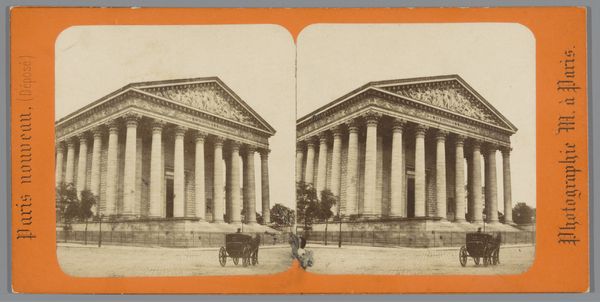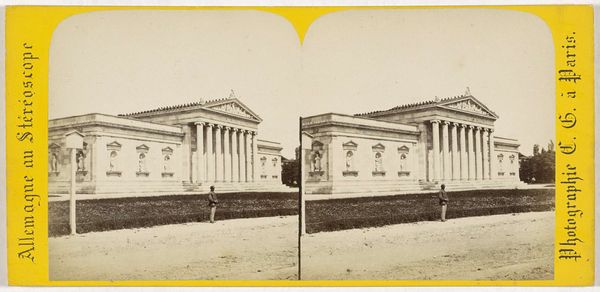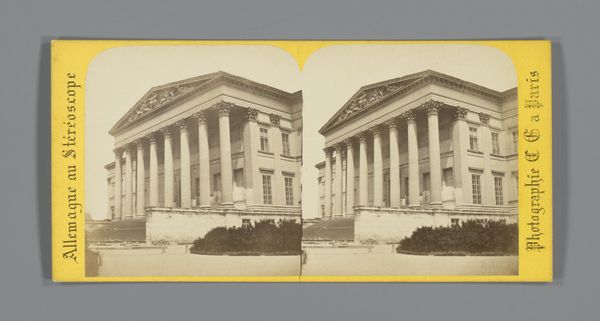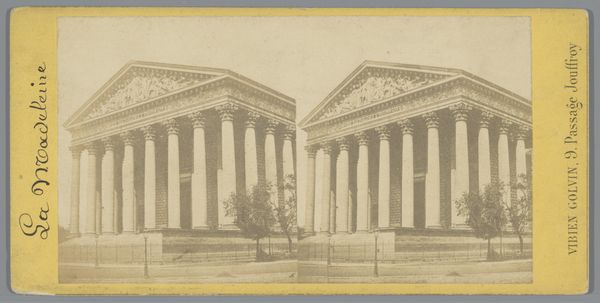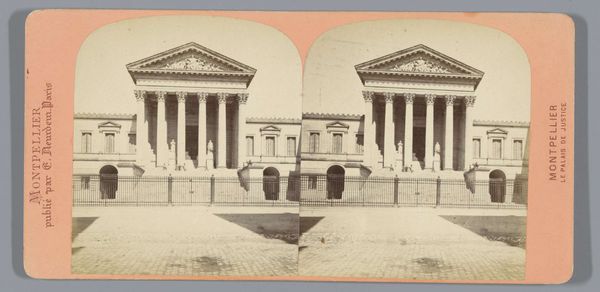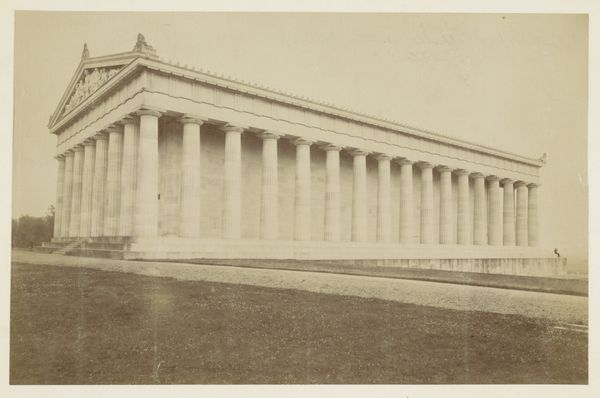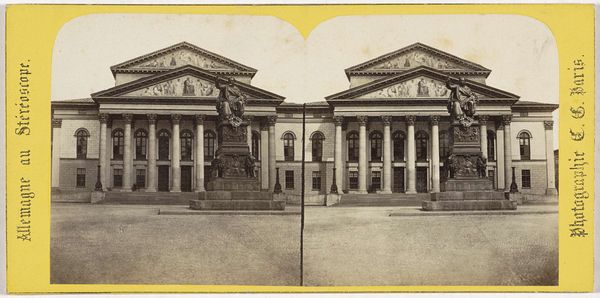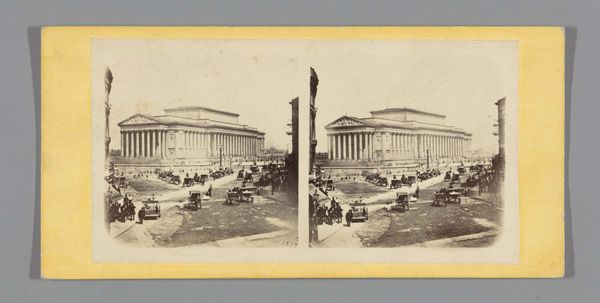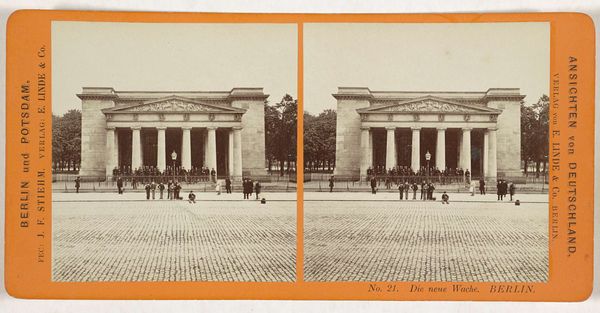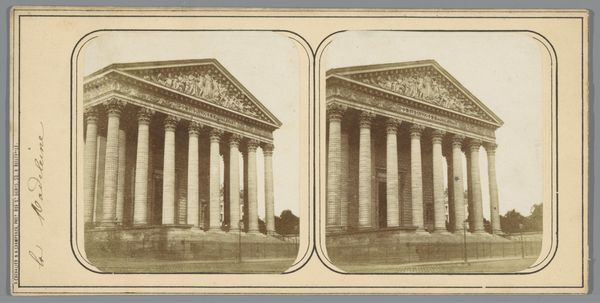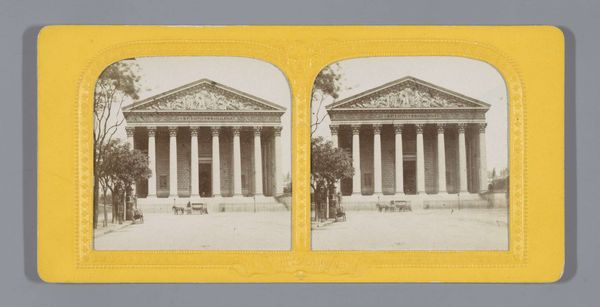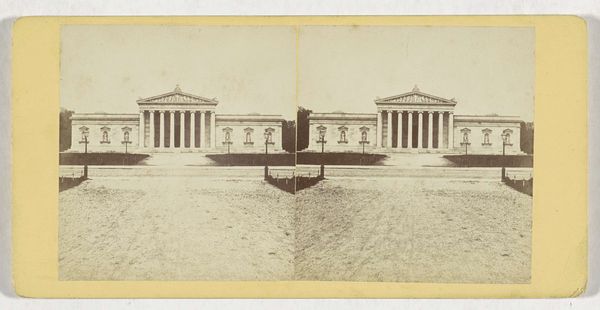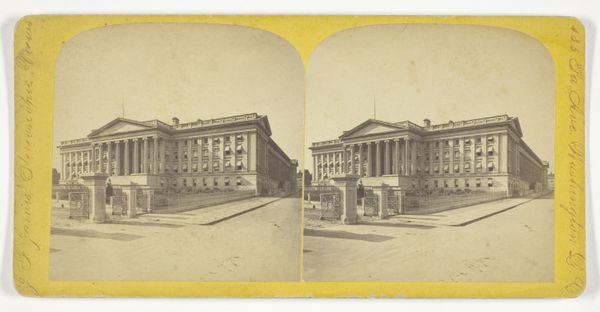
Dimensions: height 85 mm, width 170 mm
Copyright: Rijks Museum: Open Domain
Editor: Here we have an undated gelatin-silver print, likely from between 1850 and 1880, showing the facade of the Walhalla temple in Donaustauf, Germany. It's such a rigid and imposing structure in the photograph; what jumps out at you when you see it? Curator: It is striking, isn’t it? Considering its date, this photograph is documenting the cultural phenomenon of Neoclassicism. We see 19th-century Germany actively constructing its identity, aligning itself with the perceived glory and order of ancient Greece. But whose vision of ancient Greece is this really? Editor: That's a really good question. The idealization? Curator: Exactly! Neoclassicism wasn't just about aesthetics. It was a political statement. Think about it: Bavaria, at the time of construction, was attempting to solidify itself as a powerful, unified state. By building a monument inspired by the Parthenon, they were visually declaring their claim to a legacy of philosophical and democratic ideals, whether or not they truly embodied those ideals. Editor: So, the Walhalla isn’t just a pretty building; it's a piece of propaganda? Curator: That’s a strong word, but not inaccurate. It’s intended to inspire feelings of national pride and project an image of strength and cultural sophistication, domestically and on the European stage. This photograph participates in that project too. It’s disseminating that image. Editor: Wow, I didn't consider the power that this building, and this image, could have held in shaping public opinion. Thanks for making me rethink how architecture and its visual representations work! Curator: My pleasure. Thinking about how images like these shape public perception and serve particular socio-political agendas, that’s key to understanding so much art history.
Comments
No comments
Be the first to comment and join the conversation on the ultimate creative platform.
